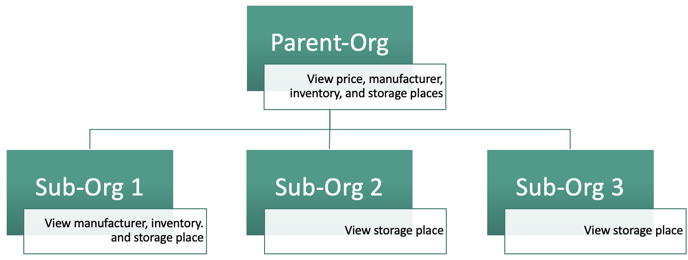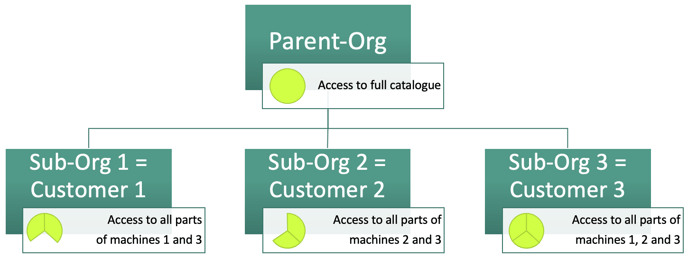You can manage part attribute access, and give individual view, search, and filter permissions to fit your company's data requirements
Overview
Partium is used in various contexts: Original Equipment Manufacturers (OEM) offer Partium's part search capabilities to their customers; organizations that use Partium internally for maintenance of their own machines; and Independent Aftermarket (IAM) vendors who integrate Partium into their websites. Each context has its complexity and requirements. Among these are strong and detailed requirements to configure who should have access to which information. You own the part catalog and want to access all its content, but your customers might need restrictions.
Partium manages part and attribute permissions using:
- sub-organizations and
- attribute permissions (visibility, filterability, and searchability).
Organizations and sub-organizations
If your customers should only have access to a specific subset of your parts, Partium provides the concept of organizations and sub-organizations (sometimes referred to as “sub-orgs”). Sub-organizations are a natural division that you can use for your own business units, for instance by geography or facility, or by customer.
Read more about data access by groups of users.
Attribute permissions
With the configuration of sub-orgs, the system is set up to determine which parts each sub-organization can access. On a more detailed level, you can refine three permissions: visibility, filterability, and searchability.
1. Define attribute visibility
In addition to restricting part access using organizations and sub-organizations (see above), you can define which organization should see which attributes.
Here are two examples of how you may want to set visibility permissions for attributes:
- As the parent organization, you want to see certain attributes such as price, manufacturer, or inventory, and prevent some sub-organization from seeing them.
- You want to link your own field workers to Sub-Org 1 (e.g. subsidiary dealing with a specific region) and they should be able to see the manufacturer and inventory. Sub-Org 2 and 3 are your customers and they should be more restricted.

By default, all attributes are accessible to all your managed organizations (parent and sub-orgs alike).
2. Configure attribute filterability
You can define which attributes show as filters in the app.
Filters are a common search modality that cuts the results list based on selected attribute values. We recommend reading our article on how to find parts using attribute filters.
3. Configure attribute searchability
Lastly, you can configure which attribute values should be searchable using the exact text search box.
Examples:
- Stock count
- Price
- Supplier
Configuring visibility, filterability, and searchability permissions allow you to define the users' search experience according to your company's data requirements. If you want to leverage the feature to set specific permissions, our Customer Success team can help you with that.

